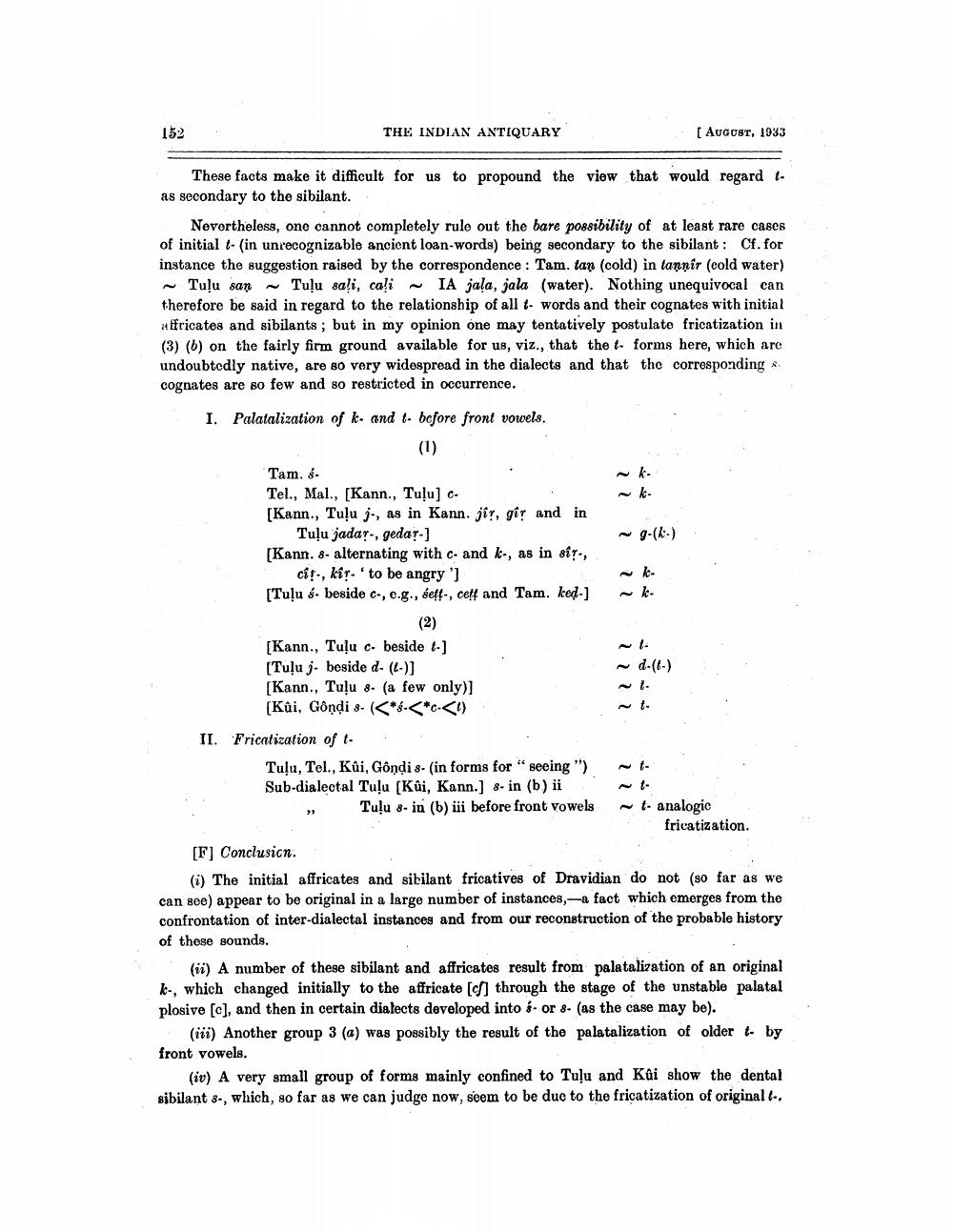________________
152
THE INDIAN ANTIQUARY
( August, 1933
These facts make it difficult for us to propound the view that would regard to as secondary to the sibilant.
Nevertheless, one cannot completely rule out the bare possibility of at least rare cases of initial t- (in unrecognizable ancient loan-words) being secondary to the sibilant : Cf. for instance the suggestion raised by the correspondence: Tam. tan (cold) in tannir (cold water)
Tulu san Tuļu sali, cali IA jala, jala (water). Nothing unequivocal can therefore be said in regard to the relationship of all t- words and their cognates with initial affricates and sibilants; but in my opinion one may tentatively postulate fricatization in (3) (6) on the fairly firm ground available for us, viz., that the t. forms here, which are undoubtedly native, are so very widespread in the dialects and that the corresponding cognates are so few and so restricted in occurrence.
1. Palatalization of k. and t. before front vowels.
Tam. &. Tel., Mal., [Kann., Tuļu] C[Kann., Tuļu j., as in Kann. jir, gîr and in Tuļu jadar., gedar-]
~ 9-(-) [Kann. 8- alternating with c- and k-, as in sir.,
cit., kir. 'to be angry '] [Tuļu ś. beside c-, e.g., sett-, cett and Tam, ked.)
(2) [Kann., Tuļu c. beside (-) [Tuļu j. beside d- (-)] [Kann., Tuļu 8. (a few only)]
[Kủi, Gôndi 8- (<*>-<*c-<4) II. Fricatization of t.
Tulu, Tel., Kũi, Gôndi 8- (in forms for "seeing "') tSub-dialectal Tuļu (Kûi, Kann.] 8- in (b)
ii t Tulu 8-in (b) iii before front vowels to analogic
fricatization. [F] Conclusion.
(i) The initial affricates and sibilant fricatives of Dravidian do not (so far as we can see) appear to be original in a large number of instances,-a fact which emerges from the confrontation of inter-dialectal instances and from our reconstruction of the probable history of these sounds.
(1) A number of these sibilant and affricates result from palatalization of an original k. which changed initially to the affricate ch through the stage of the unstable palatal plosive (c), and then in certain dialects developed into s. or 8. (as the case may be).
(iii) Another group 3 (a) was possibly the result of the palatalization of older t- by front vowels.
(iv) A very small group of forms mainly confined to Tuļu and Kûi show the dental sibilant s., which, so far as we can judge now, seem to be due to the fricatization of originalt.
111111111 111
d-()




